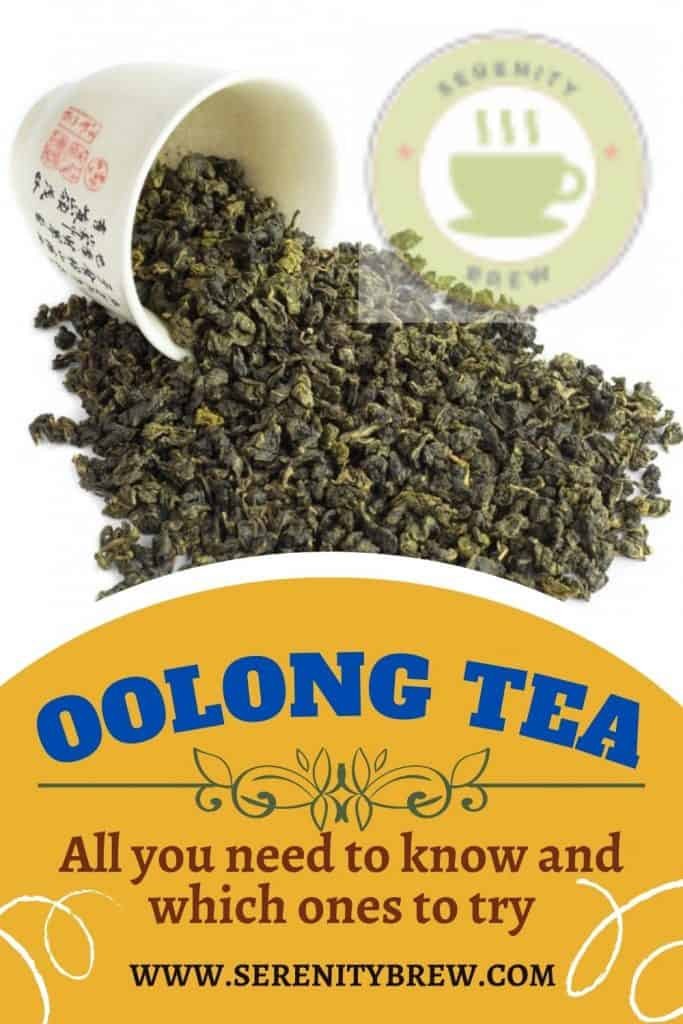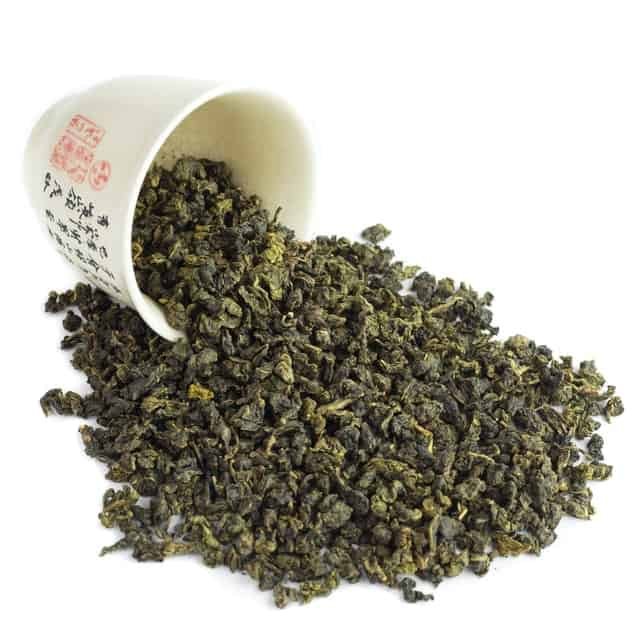
Oolong tea is a tea grown mainly in China and Taiwan. The appearance of this tea, with long, dark and curly leaves, gives rise to its name according to the Legend; oolong means black dragon in Chinese.
Oolong tea, also known as blue tea, is a tremendously popular tea in China.
Talking about oolong tea is not easy. At least, it is not to generalize because each oolong can be different in relation to its production process and, specifically, its oxidation phase. Thus, while some oolongs are closer in flavor, aroma and color to a green tea, others have greater similarities to a black tea.
Origin of oolong tea
As we already told you, oolong tea is grown mainly in China, although there are also plantations in Taiwan, Vietnam and India.
If we refer to its origin, legend has it that oolong was born on Mount Wuji, in Anxi County, in the Fujian region, China. This region has been protected and declared a World Heritage Site by UNESCO. Although, like all legends, it is not possible to trace its veracity, some poems from the Qing Dynasty refer to it.
Now, where does its name come from? The story that we have just told does not give an answer to that and to obtain one, we must resort to another fable that passes from generation to generation. Oolong is believed to be a descendant of Xi Shi Hay tea (the “dragon-phoenix tea cake”) and for this reason it was called oolong or black dragon in Chinese.
However, some people point out that the choice of the name had nothing to do with what we have told, but simply with the appearance of this tea: its leaves are long, dark and curly, reminiscent of an elegant black dragon.
The latest theory that circulates about it links its name to that of its possible discoverer: a man named Wulong who forgot the tea leaves under the sun, distracted by hunting a deer. When I picked them up again, they had started to rust. From there, the deformation that we know today as oolong would come. Which of these myths do you prefer to believe?
Oolong tea making
To make blue tea, the leaves of the tea plant, Camellia sinensis, are harvested and, after harvest, withered in the sun and then stirred in bamboo baskets. In this way, the leaves are slightly broken.
Once torn, they are subjected to an oxidation process. The duration of this stage will determine the flavor, aroma and color of the oolong, making it more like a black tea or a green tea depending on how long it is oxidized.
Actually, an oolong is considered a semi-oxidized or partially oxidized tea; that is, it does not reach the complete oxidation of black tea, but it is not consumed naturally like white tea either. In fact, if we put black tea, totally oxidized, at one end, and green tea, without oxidation, at the other, the oolong would be in the middle, closer to one or the other depending on the duration of the oxidation process that it takes. the leaves submit.
Their range of flavors varies accordingly: there are light oolongs, dark oolongs and green oolongs, each with their own complexities and aromas.
After oxidation, the leaves, which take on a yellowish hue, in many cases with reddish-toned edges, are rolled or pressed into balls, depending on the variety being produced.
What does oolong tea taste like?
It is difficult to explain what an oolong tastes like, precisely because there can be different varieties. In general, we could say that blue tea has rather mild flavors, more closely related to green tea than to black, although it is possible to find varieties with greater intensity.
It is usually characterized by having fruity or floral aromas that vary depending on its oxidation. As for its color in the cup, it is as variable as its flavors, ranging from a soft green with hints of yellow to a deep green with bluish tones.
If we talk about flavors, there is a wide range when it comes to oolongs. They can be sweet, fruity and honey aromas, or woody and thick with toasty aromas, or green and fresh. The characteristics of its cultivation and production style leave, without a doubt, an inescapable mark on tea.
6 of the best oolong tea varieties
Oolong teas offer enveloping flavors that range from sweet and floral to smoky and toasty. With those that we propose, you cannot go wrong when choosing an oolong.
Great Red Robe (Da Hong Pao), the emperor’s oolong
Legend has it that an emperor of the Ming dynasty dressed the four tea bushes with great red robes with which the infusion that cured his mother of a rare disease was made and, thus, acquired its name of Great Red Robe.
Da Hong Pao is a highly oxidized dark oolong tea that is grown in the Wuyi Mountains in China’s Fujian province, about 650 meters above sea level.
It is worth noting that the trees grown in this region are under strict surveillance by the Chinese government as they are ancient plants.
This is a highly prized and often prohibitively priced tea which is related to the government protection mentioned above and also to its brewing method which includes regular cleaning with goat’s milk, light baking and an extensive maturation process.
The tea is more intense in flavor and therefore unusual among oolongs, with warm, toasty aromas combined with floral tastes.
If you want to know more about it, visit our article on Da Hong Pao.
Iron Goddess of Mercy (Tieguanyin), the tea of the gathering monkeys
According to legend, Buddhist monks in the area trained monkeys to harvest the leaves of tea plants that grew on the steep edges of the area’s cliffs. These leaves, chosen by the monkeys where no human dared to tread, were used to make the highest quality oolong teas, reserved only for the emperors of China.
According to records, the cultivation of tea in this area dates back to the Tang dynasty (618 AD), when the goddess of mercy indicated to a peasant where the first plant that gave rise to oolong was found.
It is a tea with a fresh, energetic and herbaceous flavor, with a pleasant refreshing aftertaste, which resembles the typical flavors of green tea but without astringency.
The lightest oolong, Pouchong
Pouchong, also known as Baozhong, is produced in both China and Taiwan and its name refers to a curious part of its manufacturing process: the leaves are wrapped in paper during the drying process. This practice influences its aroma and flavor.
It is considered the lightest oolong tea and its flavor is only slightly more intense than some green teas. It has a delicate and floral fragrance; its light oxidation gives it a sweet flavor, with a touch of melon, and without astringency, which remains on the palate long after your last sip.
Milk Oolong (Jinxuan)
This variety of oolong was born in Taiwan and, nowadays, it is also prepared in Thailand. It also receives the names of Nai Xiang or, simply, 12.
Interestingly, unlike the Chinese oolongs that are harvested in the Wuji Mountains, these plants from which Jinxuan is made have a high yield and are therefore very popular among tea farmers.
Jinxuan tea combines floral aromas with a smooth, creamy, and buttery flavor, which is why it is sometimes compared to that of milk. This occurs naturally, without adding any additives, although there are producers who make flavored teas that imitate the creaminess of jinxuan tea artificially.
Assam smoked oolong, smoked but not as much
Assam tea is obtained from the Assamica variant of Camellia Sinensis, which has larger leaves than its cousin from China.
This is one of the rare varieties of oolong produced in India, so rare that it is not easily available here in the West. Its flavor is soft and malty, with fruity and tobacco notes that are due to its production process.
Although the production of this tea follows the classic Chinese methods, it then goes through a process of smoking with oak wood that gives it a peculiar character. Unlike other smoked teas like lapsang souchong, smoked tea is milder and less pungent, giving it character but not masking the natural flavors of the leaves.
Darjeeling oolong, Muscat oolong
Although when we talk about Darjeeling, we usually refer to black tea, in this case we are talking about oolong, a lesser-known variety but with very interesting nuances.
It occurs at more than 3,000 feet above sea level in areas with annual temperatures ranging from 5 to 20 ° C.
To make it, leaves and shoots are harvested and then withered in the sun. After hand-rolling, they are heated to high temperatures to stop oxidation.
This tea is a well-matched marriage between the notes of wood and muscatel typical of Darjeeling teas with the aromatic and floral touches of Chinese oolong. The result is a full-bodied, round tea with hints of orchids, which is observed to be green-orange in color.
How to drink oolong tea

Since there are different varieties of oolong tea, there is no single perfect way to prepare your cup of tea. Use the following as a general guide and adjust each step to your liking and the manufacturer’s instructions.
Step 1 – Brew the Tea
Use a teaspoon (~2 g) for every cup of water.
Step 2 – Prepare the Water
Avoid tap water as much as possible. Chlorine flavors, however slight, can affect the delicate flavor of the tea.
Heat the water to a boil and give it time to drop a few degrees.
Fill half a cup with the water and discard it, this is used to open and clean the tea leaves. Then fill the cup.
Step 3: Rest
Let the tea leaves infuse between 1 and 5 minutes. You can taste the tea to adapt it to your taste.
Longer brew times allow new flavor nuances to be released, resulting in a richer, full-bodied tea.
Which of these oolong tea varieties do you plan to discover in the near future? We are sure that you will enjoy each of them and their nuances.
